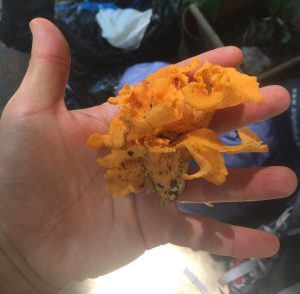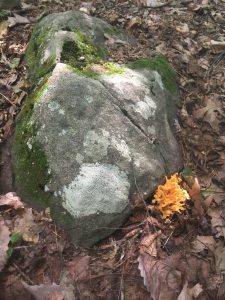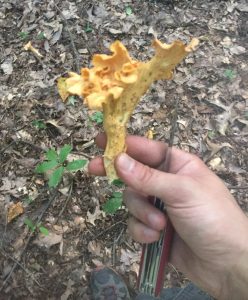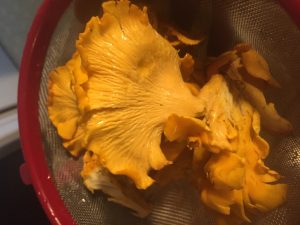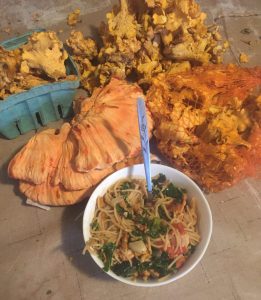(Cantharellus cibarius)
Family: Cantharellaceae
Description
Commonly called Chanterelle or Golden Chanterelle, these delicious mushrooms are more commonly foraged for than cultivated by hand. Chanterelles grow about 2-3 inches tall and are bright orange-yellow in color. The cap of the mushroom is inverted, similar to a funnel, and the underside of the cap has forked, ride-like gills. You will often find these mushrooms in the Northern Hemisphere and during the summer, more specifically late June to early April. They grow in the soil of oak or conifer woods. Chanterelles are known to give off a fruity, apricot-like scent.
Forage tips
Under the ground, Chanterelles have fungal networks, or mycelium all throughout the soil. The mycelium attaches to the roots of specific trees to form symbiotic relationships where nutrition and water is exchanged. For this reason, Chanterelles grow beside oak or other hardwood trees. They can also (less commonly) be found next to softwood trees including pine or spruce. When foraging for Chanterelles, it is important to be knowledgeable about the identifying characteristics of the mushroom and to be aware of poisonous look-alikes that are not the true Chanterelle. Jack-O-Lanterns (Omphalotus illudens), a look-alike mushroom, is very similar in color, but has unforked gills and a slightly different cap shape. This mushroom is poisonous and inedible.
Uses
Chanterelles are renowned for their unique taste and are considered to go well in pasta dishes. They can be prepared in a slow sauté for the most pungent flavor. Before cooking, use a little water to clean and lightly brush off dirt, as soaking the mushrooms can diminish flavor. On the medicinal side of the Chanterelle uses, a study published in the National Library of Medicine found that Golden Chanterelles have significant wound-healing and anti-inflammatory properties when used topically as an extract.
Disclaimer: It is important to remember to never eat or use a mushroom if you are not 100% certain what kind it is, and make sure you perform thorough research on preparation before tasting.
Sources
- The Complete Mushroom Hunter by Gary Lincoff
- https://www.mssf.org/cookbook/chanterelle.html
- https://mdc.mo.gov/discover-nature/field-guide/golden-chanterelle-girolle
